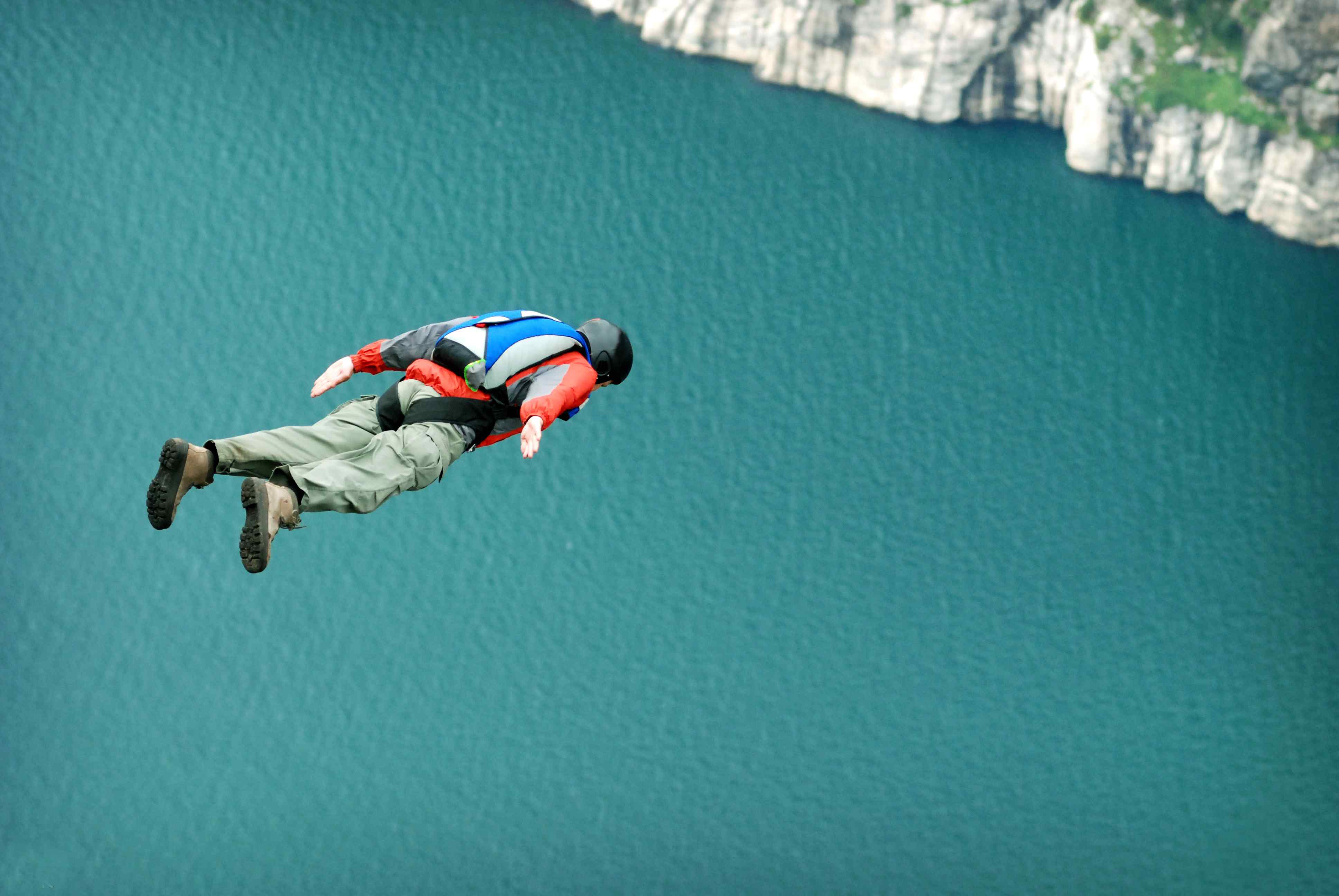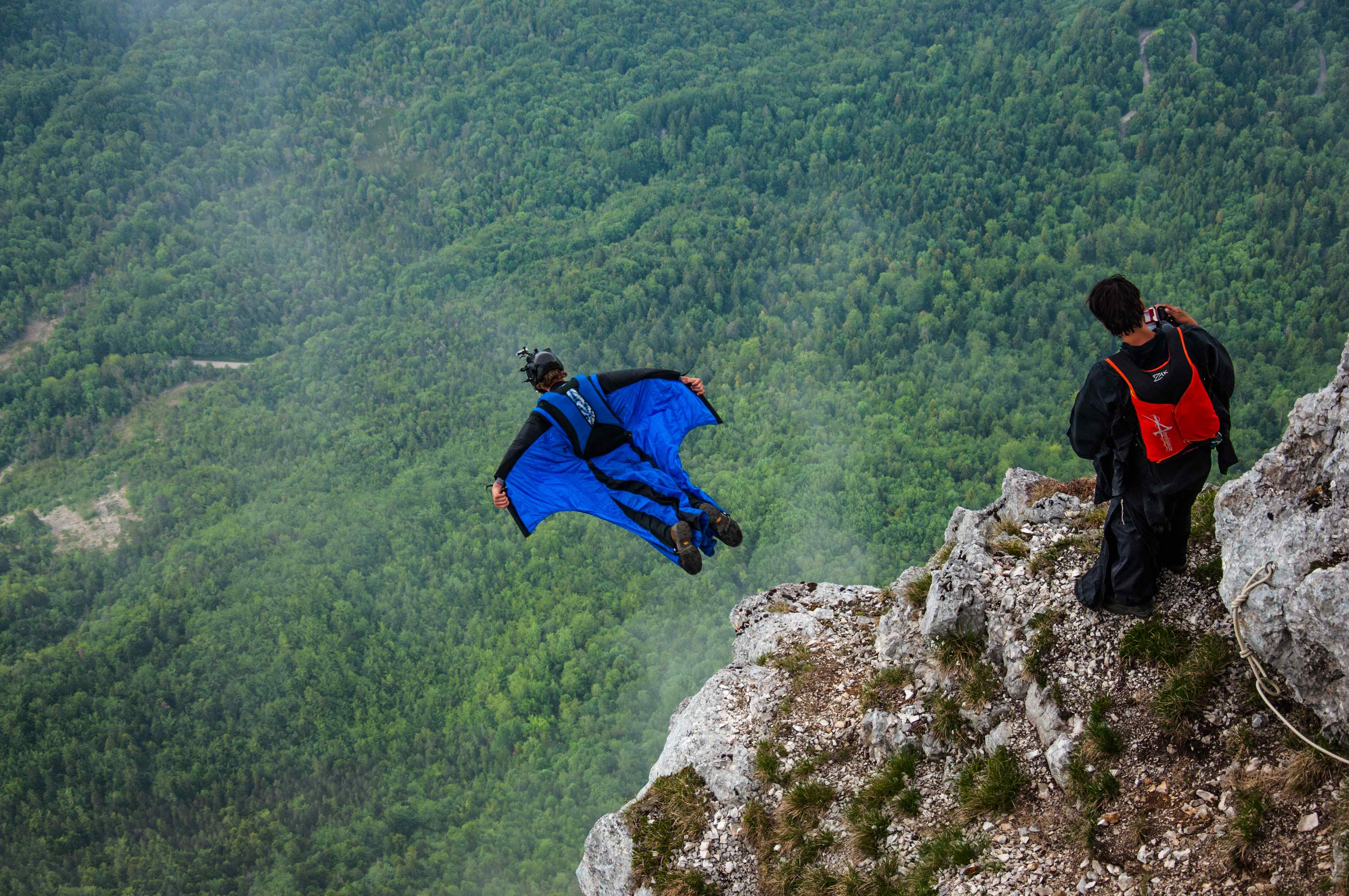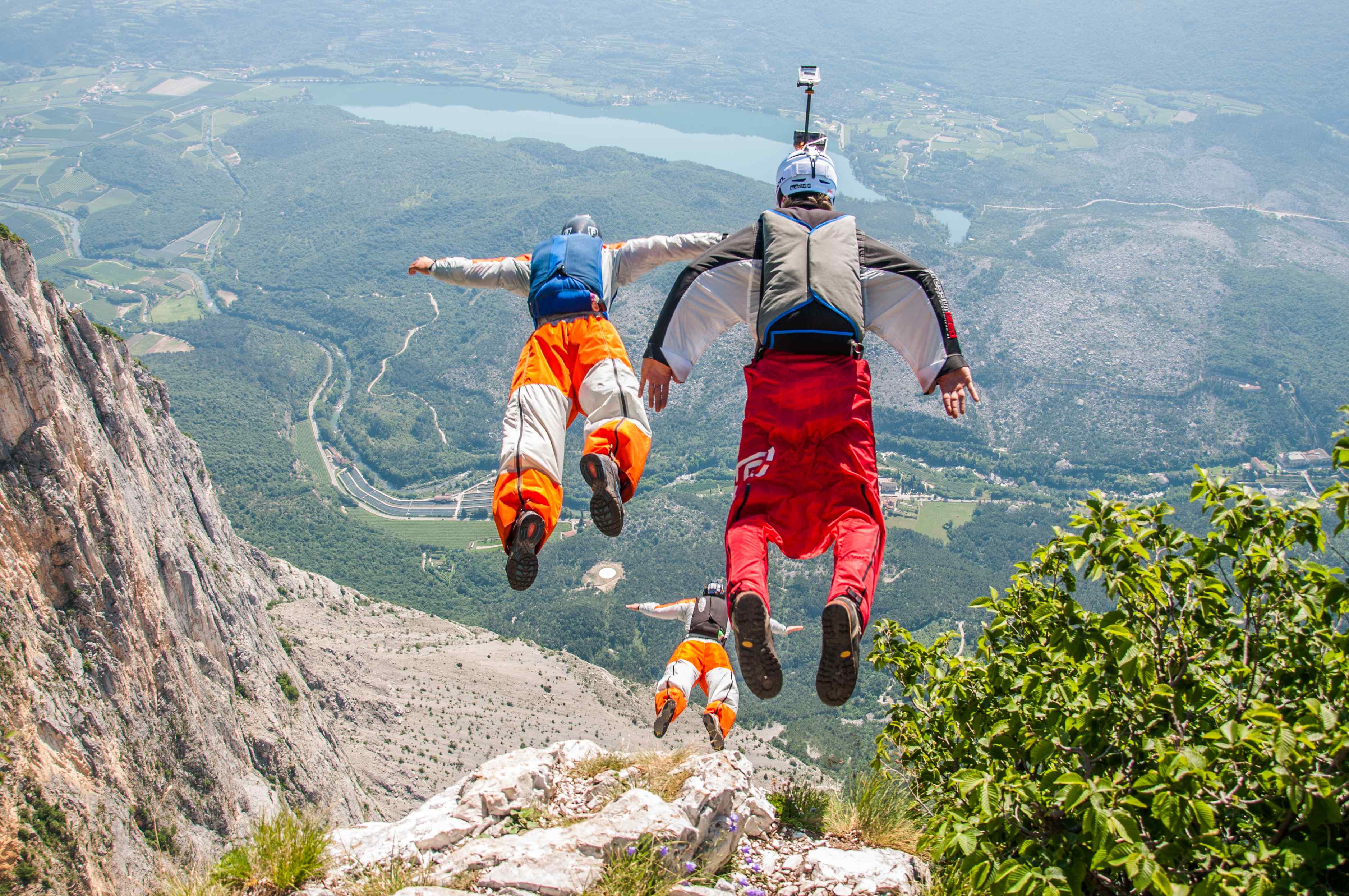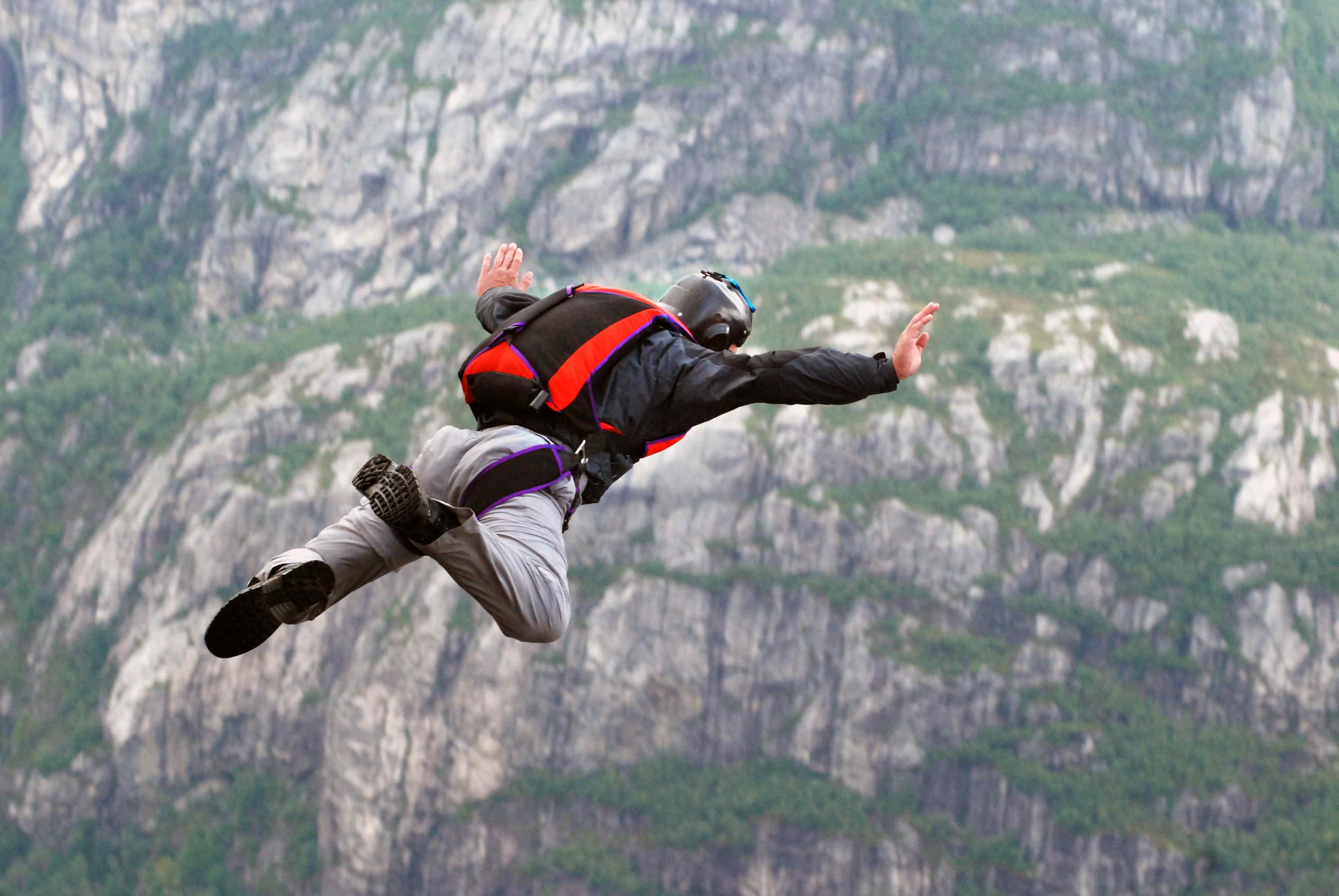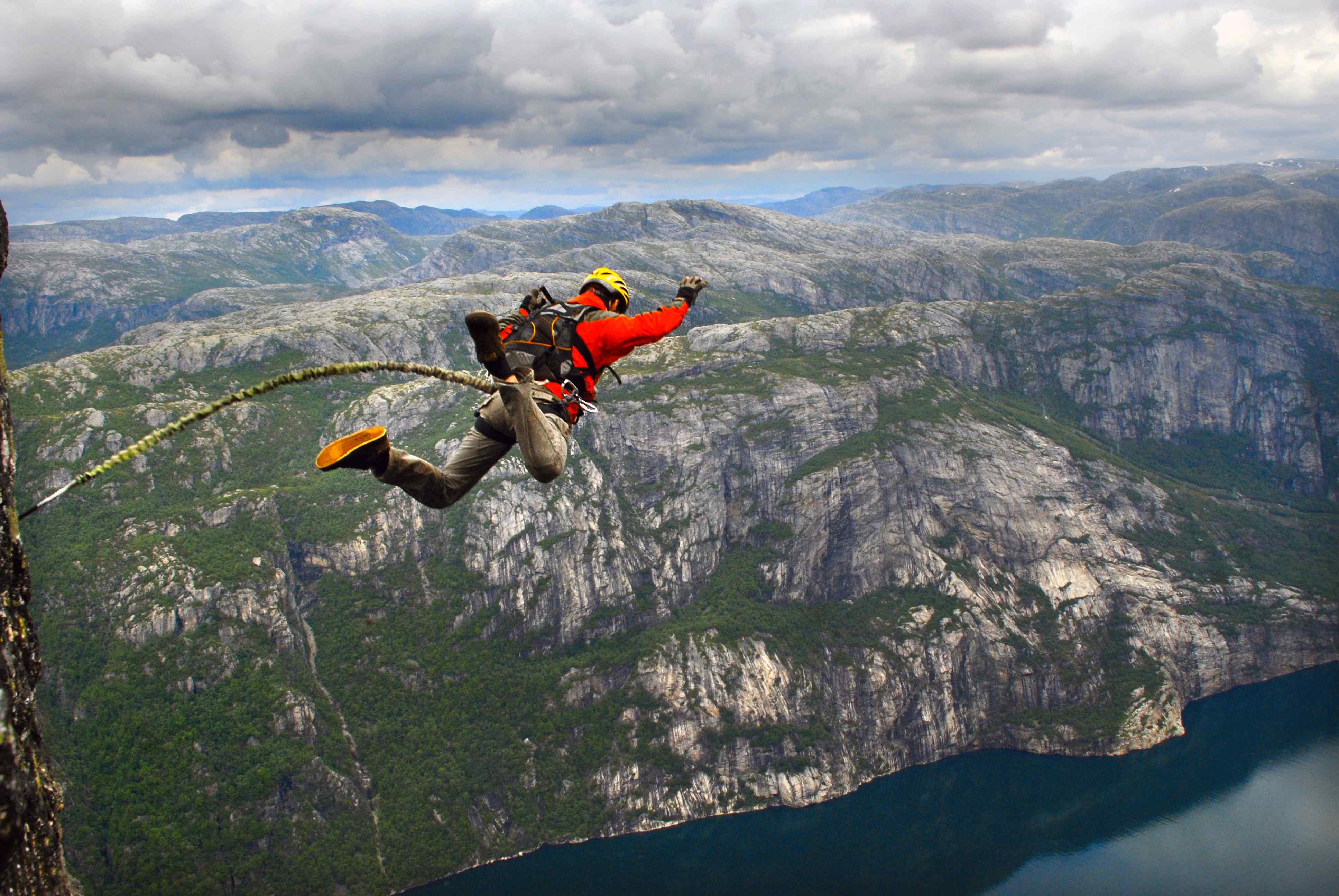BASE jumping is a thrilling sport that can provide an adrenaline rush like no other. It's called "the most extreme sport in the world" for a reason, and it's not for the faint of heart.
But before you can even begin to think about your first leap, you need to know how much it costs.
Just like any other sport, learning to BASE jump takes time and money. You need to be aware of the financial commitment you're making before you take the plunge.
Aside from the cost of gear, you also need to factor in training costs and travel expenses.
Let's break down the cost of BASE jumping so you can decide if it's the right sport for you.
How Much Does it Cost to Become a BASE Jumper?
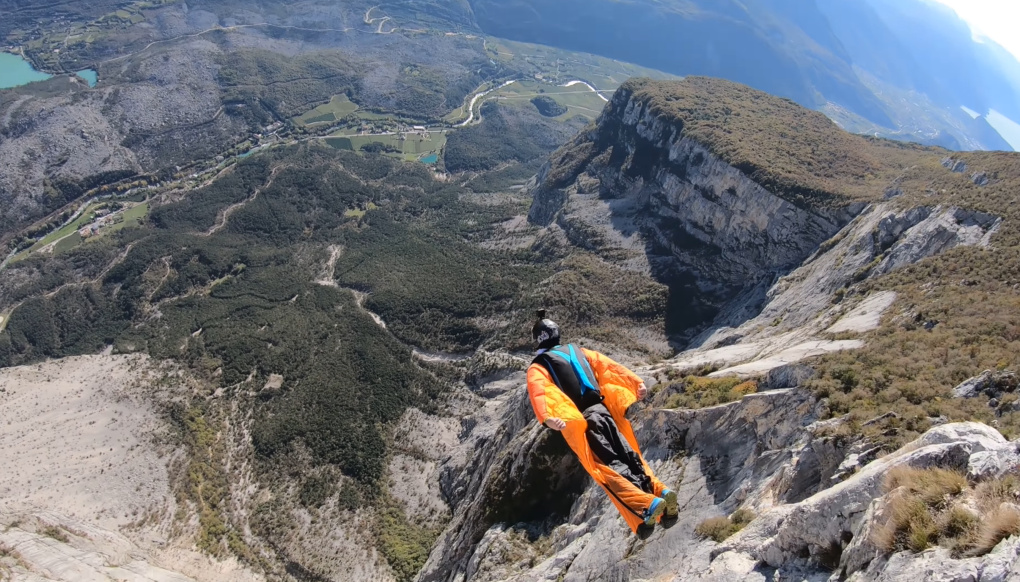
You'll need to be a highly experienced skydiver before you even consider enrolling in a beginner's base jumping course. That means spending a lot of time in the air and dropping plenty of cash on lessons, gear, and jumps.
Begin with an introductory skydiving course and an A-class skydiving license. Such courses range in price from $3,000 to $5,000.
However, having your USPA A license merely certifies you as a novice skydiver; you still have a long way to go before reaching a level where you can learn BASE jumping.
In fact, you'll need another 175 or so jumps spread out over at least 18 months. In the meantime, you'll want to start building your own skydiving gear.
Depending on the model and manufacturer, a decent parachute can easily set you back another $3,000 to $5,000+.
You'll also need a reserve chute, which will set you back about $1,500+, as well as an ADD that is likely to run past $1,000. You'll also need a jumpsuit and helmet, which can cost $800 or more.
This is if you buy all of your equipment new. Even if you're on a shoestring and building a decent second-hand rig, you'll be looking at spending around $6,000+.
Then there's the cost of all your jump tickets, transportation, and USPA membership, which totals another $1,000.
You'll have already spent more than $10,000 by the time you're ready to begin your first base jumping course (possibly more than twice that).
While a solid basic jumping course may cost around $1,500, most of your skydiving gear will not be utilized. As your love for base jumping grows, you'll need to invest in a completely new gear kit.
How to Build Your First BASE Rig?
Building your own BASE rig for the first time can be pretty exciting. It's a process that allows you to be very hands-on with your gear, and it can save you some money in the long run.
But it's not something that should be taken lightly – there are plenty of things that can go wrong if you don't know what you're doing.
Here are all the pieces of equipment you need to get your BASE gear set up:
Pilot Chute Selection
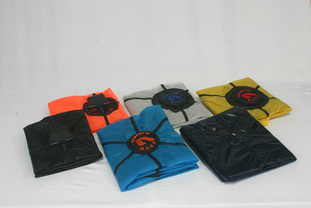
Your pilot chute depends on the kinds of jumps you're going to do.
The canopy's weight may also influence which pilot chute to use. A lighter parachute may not require as much drag as a heavier, bigger one.
However, each BASE jumper will probably end up with a "quiver" of PCs in their first few tries.
PCs are tools that need to be changed when the task changes. Start your collection with a 42" and build from there. Generally, it costs between $1,200 and $1,500.
Bridle
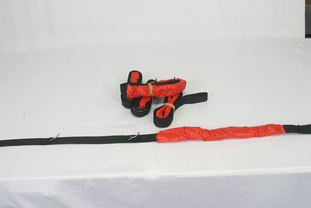
Static Line BASE Jumping Bridle, $72.00 – $99.00
Many base bridles are 9 feet long and can be used for any BASE activity, from low slider-off jumps to huge wall wingsuiting.
Some come with upgraded bridles with a magnet attached to them that connects to another sewn-in magnet on the rig's right shoulder.
During a jump from the ground, this function provides bridle control during the ascent to exit and during freefall.
There are specialized bridles for specific applications (such as static line jumps), but a basic 9-foot bridle (with or without a magnet) is fine for a first rig. Expect to spend around $50-100.
Canopy
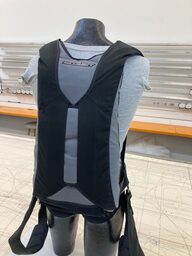
Summit Sm56 & FLiK II 250 UL, $3,992
Vented parachutes are the most common and safest type of base jumping canopy. They allow you to open them much faster and more consistently at low altitudes and slower speeds.
They are also less susceptible to collapse and spinning and are easier to steer. A good BASE canopy will usually run you in the neighborhood of $2,500 - $4,000.
Container
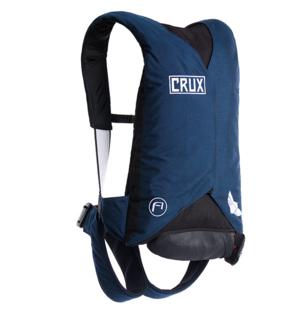
CRUX 3R, $1,290
The container is a metal frame that holds the canopy and pilot chute. It's essential to find one that fits well and has all of the features you need for your type of jumping.
There are many options for containers, so take your time finding the right one. The price of a decent velcro-closed or single/double pin container may range from $900 to $1,500.
Risers can be added to some containers, although a three-ring riser, which runs around $150, is recommended.
It's unlikely that you'll ever need to use a riser, but having an independent one adds protection.
Safety Rig
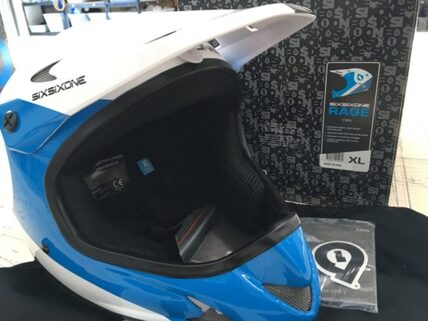
Head Protection for BASE, $30 – $125
You'll have to upgrade your body armor and helmet. You may already own a decent skydiving helmet and body armor, but we recommend purchasing gear explicitly designed for base jumping.
Having the most secure gear makes sense because you're more likely to suffer significant injuries while base jumping. Expect to pay more than $500-$1,000 for a decent helmet and body armor rig.
You'll also need a light and sturdy gear bag to store all of your new equipment while trekking across rugged terrain. A decent gear bag will set you back around $100 to $150 more.
Is it Okay to Buy Second-Hand BASE Jumping Equipment?
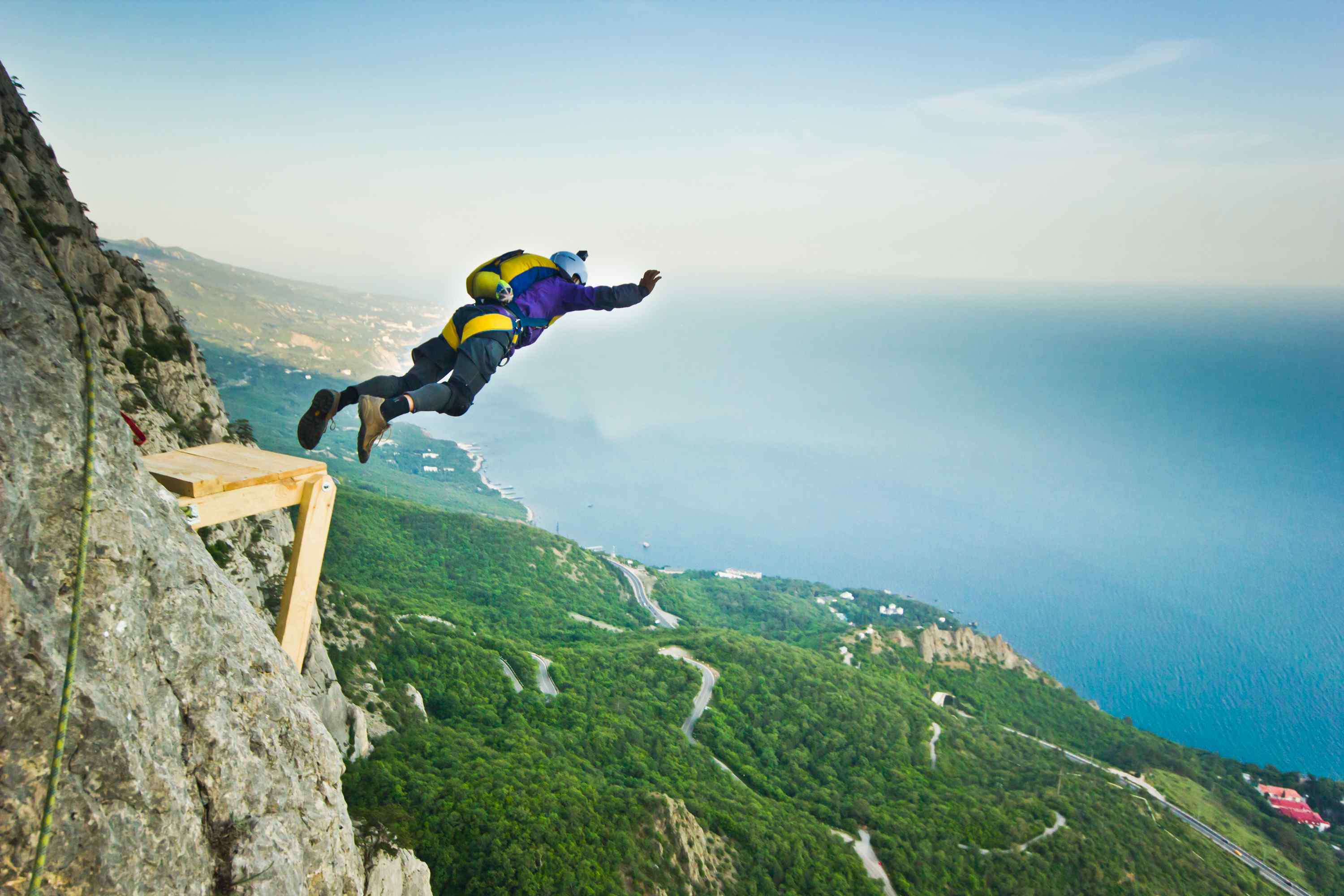
Now that you've totaled your estimated cost, you may be wondering if it's okay to buy second-hand gear.
While some risks are associated with used equipment, it's ultimately up to the jumper to decide what they're comfortable with.
If you're worried about quality, bear in mind that most BASE jumping and skydiving equipment are exceptionally manufactured. Not to mention that jumpers and skydivers take extra good care of their rigs.
You can usually find good deals on used equipment, but be sure to inspect everything closely before purchasing or send them to a qualified rigger for a thorough inspection.
Perhaps the ideal compromise is to buy your body armor, jumpsuit, and helmet all-new, allowing you to try on and discover the precise fit and comfort you require. Look for your most expensive equipment, such as your canopy and container, on the second-hand market to save money.
Conclusion
BASE jumping may be an expensive sport, but it's one that can offer wonderful experiences unlike anything else. With the proper gear, you're ready to take on the challenges and thrills of this extreme activity.
Just be sure to do your proper research and take the time to find good deals on quality equipment.
See you at the drop zone!

